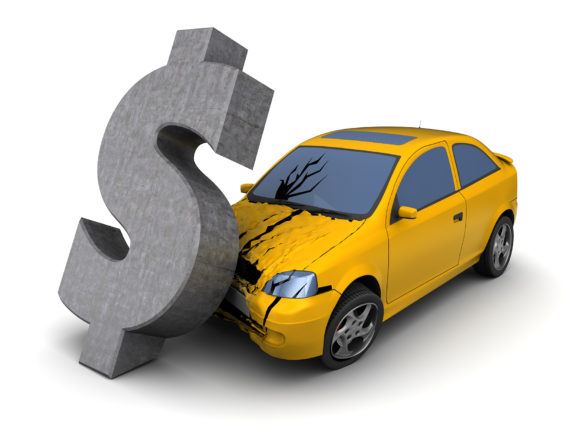The removal of a vehicle from a multiple motor vehicle insurance policy, in which stacked coverage had previously been waived, does not require a renewed express waiver of stacked coverage under Pennsylvania’s Motor Vehicle Financial Responsibility Law.
The Pennsylvania Supreme Court (Middle District) has ruled that an en banc panel of the Superior Court did not err in affirming a trial court ruling that State Farm Mutual Automobile Insurance Co. was not required to obtain a new uninsured/underinsured stacking waiver from Robert and Kelly Franks when they deleted an automobile from their automobile insurance policy.
As a result of the court decision, the Franks are not entitled to a total of $200,000 in stacked underinsured motorist coverage.
Stacking relates to adding coverages from other vehicles or different policies to provide a greater amount of coverage available under any one vehicle or policy. An insured is entitled to waive stacking of uninsured or underinsured coverages in which case the limits of coverage available under the policy shall be the stated limits for the injured person’s vehicle. Absent a waiver, stacked coverage would be the default. The premiums for an insured who exercises a waiver are reduced to reflect the different cost of such coverage.
The Franks took out their multi-vehicle policy with State Farm in 2013. They included underinsured motorist coverage (UIM) but completed a form rejecting stacked UIM coverage. The policy was issued with unstacked UIM coverage of $100,000 per person and $300,000 per accident limits.
Over several years they changed vehicles. They added an additional vehicle, a 2012 Nissan Altima, to the policy effective January 22, 2014. Robert Franks signed a new form rejecting stacked UIM coverage. Thereafter, they removed a 1999 Ford Taurus from the policy effective July 23, 2014. Upon removal, the policy continued without any change to the coverage or premiums relative to the remaining vehicles. The Franks did receive a credit of $15.06 for the 11 days of unused premium for the removed vehicle and the total ongoing six-month premium was about $250 less than with three vehicles. The next change to the policy occurred on March 26, 2015, when they replaced their 2002 Nissan Xterra with a 2013 Nissan Frontier. No additional form rejecting stacked UIM coverage was offered or sought to be completed on the removal of the Ford Taurus from the policy or thereafter and the ongoing premiums they paid reflected the lower rate for non-stacked UIM overage on two vehicles.
In August 2016, Robert Franks was injured while operating his 2013 Nissan Frontier in an accident caused by the driver of the other vehicle, who had insufficient liability coverage to cover the injuries and damages Franks suffered. Franks filed a claim for underinsured motorist (UIM) benefits under the policy with State Farm.
Franks claimed a $200,000 limit because the absence of a valid waiver of stacked UIM coverage following the prior removal of a 1999 Ford Taurus from the policy resulted in the default stacked coverage mandated by the Motor Vehicle Financial Responsibility Law (MVFRL).
However, State Farm claimed the Franks’ policy at the time of the accident afforded only a $100,000 limit because the removal of a vehicle from a multi-vehicle policy, without more, did not alter the status of Franks’ prior waiver nor trigger a need to execute a new stacking waiver.
Franks argued that a change in a policy such as removing a vehicle, was equivalent to a purchase that triggers the requirement that the insurer offer the option of waiving stacked coverage. In the absence of a signed waiver, stacked coverage is in effect.
Citing a 2019 ruling by the Supreme Court in Barnard v. Travelers Home & Marine Insurance Co., the Superior Court noted that the term “purchase” should be afforded its standard dictionary meaning as “the act or an instance of buying.” The intermediate court concluded that the removal of a vehicle from coverage under a multi-vehicle policy where appropriate credits were made, and the remaining coverage and premiums continued unchanged, did not meet this plain meaning of a purchase.
On appeal, the Franks countered that a purchase includes circumstances when an insured removes a vehicle from an existing multi-vehicle policy because that changes the potential UIM coverage from that offered under the original policy and because the amount of premiums for that coverage also changes.
The Franks also noted that removing a vehicle from a multi-vehicle policy generates a new separate declaration page and premium adjustments, thus requiring a new waiver of stacking form. They further claimed that under the plain language of the law “purchase” is not limited to “initial purchase” and that the term applies when there is a “new, aggregate amount of coverage.”
State Farm argued that a “purchase” requires some acquisition in exchange for payment. By removing a vehicle from coverage of the policy, the Franks acquired nothing they did not already have at the same cost.
The high court decided that the Superior Court did not err in affirming the trial court’s order, in relying on Barnard that the statute is not ambiguous, granting State Farm’s declaratory judgment action and determining that the removal of a vehicle from coverage, while not disturbing the remaining coverage, does not constitute a “purchase” triggering any renewed requirement to offer an express waiver of previously waived stacked UIM coverage.
The high court said the Franks wanted to depart from the plain meaning of the language to reach a result in closer alignment with what they deem to be the underlying purpose of the provisions at issue. They expressed concern that a removal of a vehicle from a policy may alter the economic considerations the insured considered in initially waiving stacking, making it now more affordable to keep stacked coverage.
In pursuing these purported policy aims, however, the court said they failed to express how the use of the phrase “each named insured purchasing uninsured or underinsured motorist coverage for more than one vehicle under a policy …,” as used in the law is ambiguous so as to trigger alternate interpretive considerations.
When the Franks removed one vehicle from coverage, the conditions and costs of coverage on the remaining vehicles remained unchanged. The fact that their potential financial considerations in initially waiving stacked coverage may now differ does not convert the removal into a “purchase” under the plain meaning of that term.
In conclusion, the court kept to the logic of Barnard in construing “purchase” in its plain meaning does not justify an expansive interpretation equating the term with any “change.” In summary, the removal of a vehicle from coverage under a multi-vehicle policy under conditions that do not alter the pre-existing coverage or costs relative to the remaining vehicles is not a purchase requiring a renewed express waiver.
Topics Pennsylvania
Was this article valuable?
Here are more articles you may enjoy.



 Marsh Sues Aon, Ex-Team Leader Over Exit of 20 Construction Surety Employees
Marsh Sues Aon, Ex-Team Leader Over Exit of 20 Construction Surety Employees  Wildfire Losses Drop Chubb Q1 Net Income 38%, While Tariffs Create ‘Confusion’
Wildfire Losses Drop Chubb Q1 Net Income 38%, While Tariffs Create ‘Confusion’  Class Action Accuses Toyota of Illegally Sharing Drivers’ Data With Progressive
Class Action Accuses Toyota of Illegally Sharing Drivers’ Data With Progressive  More Floridians Moving Out Due to Housing, Insurance Costs, Cotality Report Says
More Floridians Moving Out Due to Housing, Insurance Costs, Cotality Report Says 

